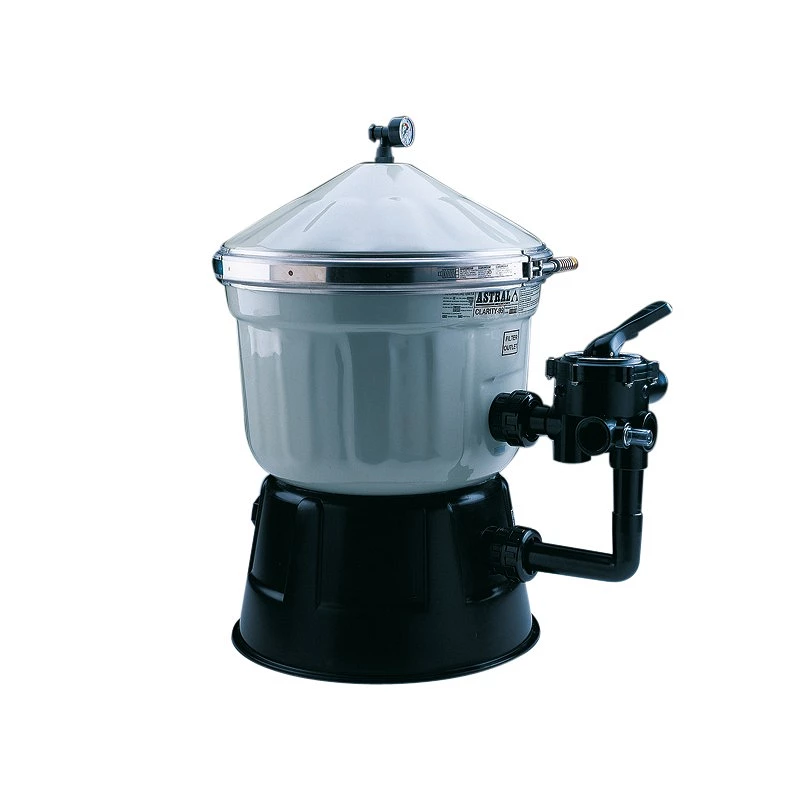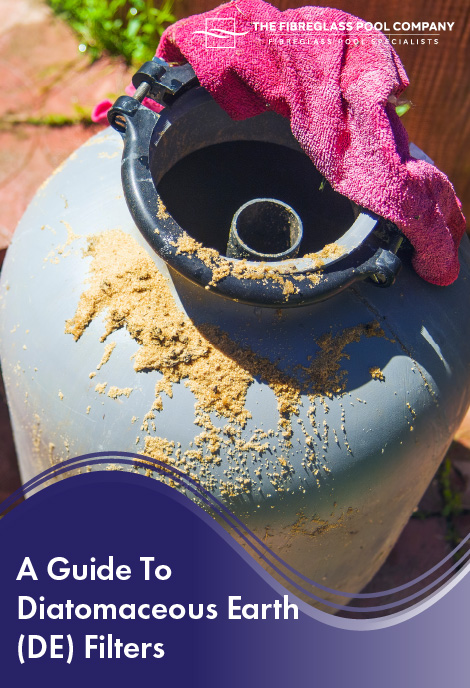Diatomaceous Planet Filtering: A Natural Solution for Superior Water Filtration

Diatomaceous Planet (DE) filtering system has emerged as an engaging method for improving water purification, using the one-of-a-kind properties of fossilized diatoms. As worries over water top quality magnify, understanding the benefits and practical applications of DE filtering ends up being significantly appropriate.

What Is Diatomaceous Earth?
Diatomaceous planet (DE) is a normally happening, soft, stratified rock that is composed largely of the fossilized remains of little water microorganisms called diatoms. These single-celled algae possess an unique, silica-based cell wall that adds to the distinctive homes of DE. The rock is porous and generally light, permitting it to take in various substances efficiently.

As a result of its high porosity and absorptive capability, DE serves countless applications, including its use in farming, insect control, and, notably, water filtration. The effectiveness of diatomaceous earth in filtering system is credited to its ability to trap and remove contaminations from water, making it an increasingly preferred choice amongst those seeking all-natural filtering services. Its eco-friendly nature and convenience better boost its charm throughout various markets.
Just How Diatomaceous Planet Filtering Works
The unique structure of diatomaceous earth (DE) allows it to function as an effective purification medium in water purification systems (diatomaceous earth filtering). Made up of the fossilized remains of tiny, marine organisms referred to as diatoms, DE possesses a permeable and highly absorbing nature. This intricate framework enables DE to trap contaminations and contaminants as water moves with it, properly removing fragments as tiny as 1 micron
When water is gone through a DE filter, the fluid runs into a network of tiny pores that capture suspended solids, germs, and various other unwanted products. The filtering process occurs because of both electrostatic and mechanical interactions, where larger bits are literally caught within the DE's matrix, while smaller bits might stick to the surface as a result of charged communications.
Additionally, DE can be used combined with other filtration approaches to enhance general performance. As water proceeds to stream with the DE layer, it progressively ends up being clearer and cleaner, showcasing the tool's ability to boost water high quality without the demand for rough chemicals. This all-natural purification process highlights diatomaceous planet's function as a effective and sustainable option for water filtration.
Benefits of Diatomaceous Planet Filtering
Efficiency in water filtration is significantly enhanced with making use of diatomaceous earth (DE) filtering, providing many benefits that make it a favored option for numerous applications. Among the key advantages of DE filtering system is its ability to remove a variety of contaminants, consisting of tiny microorganisms, sediments, and even certain chemicals. This capacity ensures that the water purified through this technique is not only tidy but also risk-free for consumption.
Furthermore, DE filters have a high circulation price, which enables quicker purification contrasted to standard methods. click for info This particular is particularly advantageous for large-scale operations such as municipal water therapy plants or pool. Using DE likewise decreases the requirement for rough chemical additives, promoting a much more ecologically pleasant method to water page purification.
Moreover, DE filtering system systems are reasonably very easy to keep, requiring less constant replacement than other filtration media. The natural origin of diatomaceous planet contributes to its sustainability, making it an eco-conscious option. On the whole, the mix of effectiveness, performance, and ecological benefits settings diatomaceous planet filtering system as a leading remedy in the realm of water purification.
Contrast With Typical Water Filters
When reviewing water purification methods, diatomaceous planet filtering system stands out in contrast to conventional water filters. Standard water filters, such as activated carbon or ceramic filters, mainly concentrate on getting rid of pollutants with adsorption or physical obstacles. While these methods work for particular pollutants, they may not catch smaller sized bits, germs, or viruses as effectively as diatomaceous planet (DE) filters.
Diatomaceous earth filtering system uses the one-of-a-kind structure of diatomite, composed of tiny, porous fossilized algae. This enables DE filters to trap bits as small as 1 micron, offering premium purification capabilities. Additionally, DE filters can take care of bigger quantities of water without significant stress loss, making them suitable for both household and commercial applications.
Furthermore, diatomaceous planet is a natural and lasting product, posing less environmental issues compared to some synthetic filter media. In comparison, traditional filters often need routine replacement and disposal, leading to increased waste.
Applications and Make Use Of Instances
Diatomaceous planet (DE) filtering has a varied series of applications across numerous industries as a result of its efficient filtration capabilities. Among the most popular uses DE remains in the food and beverage industry, where it functions as a filtering medium for beer, a glass of wine, and juice manufacturing. Its porous structure effectively eliminates contaminations, guaranteeing a palatable and clear end product.
In the realm of swimming pool upkeep, DE filters are favored for their capability to trap penalty fragments, offering premium water clarity compared to conventional sand filters. Furthermore, DE is used in community water therapy facilities, where it aids in the removal of suspended solids, germs, and other pollutants, adding to safe drinking water.

Beyond water filtration, diatomaceous earth finds applications in the agricultural sector as a natural chemical and soil modification, advertising much healthier crops while minimizing chemical use. Moreover, its absorbing residential properties make it valuable in various commercial processes, including oil spill clean-ups and as a filler in building and construction products. address Generally, the convenience of diatomaceous planet filtering system placements it as a beneficial solution for enhancing water high quality across multiple domains.
Conclusion
Diatomaceous planet filtering represents a sustainable and efficient method for water filtration. As awareness of water high quality issues grows, the adoption of diatomaceous earth filters in various applications is most likely to enhance, contributing to improved public health and wellness and ecological conservation.
Diatomaceous Earth (DE) filtering has arised as a compelling technique for enhancing water filtration, making use of the special residential properties of fossilized diatoms. As water proceeds to stream via the DE layer, it gradually ends up being clearer and cleaner, showcasing the medium's ability to enhance water high quality without the need for harsh chemicals.Efficiency in water purification is considerably enhanced with the usage of diatomaceous earth (DE) filtering, using countless benefits that make it a preferred selection for several applications.When examining water filtration methods, diatomaceous earth filtering system stands out in contrast to traditional water filters. Traditional water filters, such as triggered carbon or ceramic filters, largely focus on removing pollutants through adsorption or physical barriers.